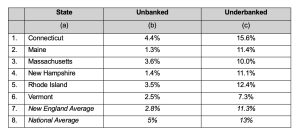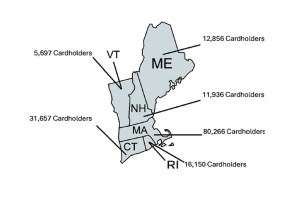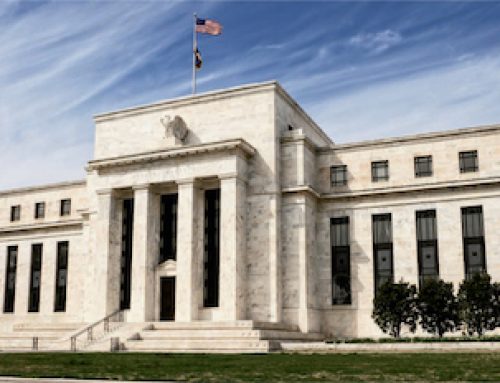Focus on New England
In the first series of posts detailing comparative numbers of cardholders by state and region, we’re looking at New England. Focusing on these demographics will allow us to identify the geographical differences and similarities of interest to those reviewing Direct Express® from a state perspective.
Comprising the states of Connecticut, Maine, Massachusetts, New Hampshire, Rhode Island, and Vermont, New England makes up a large part of the Direct Express® North East Region. This region also includes New Jersey, New York, and Pennsylvania, and is home to 17 percent of the total number of Direct Express® cardholders.
According to the US Census reports, New England has an estimated population of just over 15 million. Approximately 19 percent of the population is under 18 years of age, while another 19 percent of New Englanders are 65 years or older. The states of Maine and Vermont have particularly high proportions of residents over 65 years old, with 21.5 percent and 20.3 percent respectively (Consumer Affairs [updated 2024]). As a matter of fact, Maine has the largest proportion of over-65s in the US.
According to the latest information provided by the FDIC [See Note 1], averaged out across constituent states, New England rates of unbanked and underbanked [See Note 2] are 2.8 percent and 11.3 percent, respectively. This is below the national norm of 5 percent unbanked and 13 percent underbanked (see Fig. 1, below). 68 percent of Direct Express® cardholders nationwide are unbanked (Cardholder Survey).

Fig 1: Unbanked/Underbanked Rate in New England
In New England there are 158,562 Direct Express® cardholders (Annual Cardholder Survey 2023), with the breakdown by state as follows*:

Fig 2: Direct Express® Cardholders by State in New England
Direct Express® is available for beneficiaries of eight government agencies and 25 programs (See A Growing Program), though a majority (more than 60 percent) of Direct Express® cardholders receive Supplemental Security Income (SSI) from the Social Security Administration (SSA) via their cards. The SSA is reporting that, as of 2022, 328,959 individuals in New England receive SSI with a monthly total disbursement of $206 million (SSI Recipients by State and County).
These figures demonstrate that Direct Express® is well-utilized in New England and plays an important role in benefit delivery to those who choose it. Secondary effects of the program – particularly on financial inclusion – are less easy to quantify, but we can safely surmise that nearly 160,000 New Englanders benefit from the enhanced financial capability that a network-branded prepaid debit card brings them.
We will continue to focus on individual states and regions in the Direct Express® Demographics series.
Look out for Part 2: California, next.
[Note 1] These are the latest available figures from the FDIC measuring 2021 levels. There is no reason to expect significant change since these were measured.
[Note 2] The Library of Congress defines an “unbanked” person is someone that does not have a checking or savings account with an insured (FDIC) institution, and the term “underbanked” to mean a household which had a checking or savings account with FDIC insured institution, but regularly used alternative financial services (AFS).
SOURCE: Direct Express®









